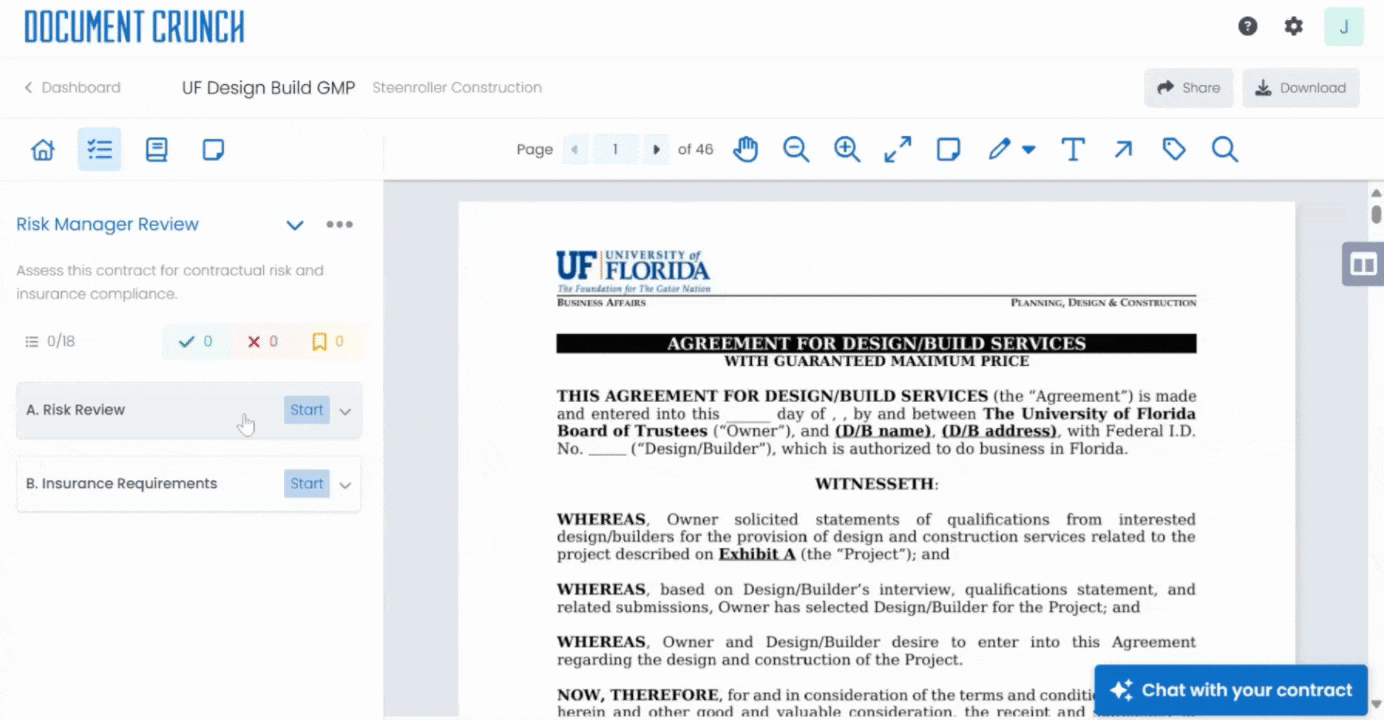Keep Calm and Crunch On: The Power of Multiple Checklists for a Crunch


Contracts can be dense, complex, and full of risk, but having a standardized review process, built around multiple checklists, tailored for different roles, streamlines the way teams handle contract reviews. In the fast-paced construction industry, using role-specific checklists ensures accountability, efficiency, and improved outcomes, all while keeping everyone on the same page.
Why Multiple Checklists Matter
Contracts are multifaceted documents that require input from various departments: legal, risk management, project management and more. Each team has unique priorities and areas of expertise. By having separate, dedicated checklists, each team can focus on the aspects of the contract that matter most to them without having to wade through irrelevant sections, which simplifies the review process.
Instead of creating a single, lengthy checklist with hundreds of items, breaking up the checklist by role provides these top four benefits:
- Accountability Each team member knows exactly what they’re responsible for, ensuring nothing is overlooked.
- A Single Source of TruthBy generating one version of the document with multiple review streams, the entire team works from the same foundation without duplicating effort.
- Streamlined ReviewsRole-specific checklists make the review process more concise and less overwhelming. Each team focuses only on the contract provisions that affect them.
- Enhanced VisibilityClear, role-based checklists give your team a better view of progress, making it easy to track where you are in the review process and stay ahead of deadlines.
Best Practices for Checklists
Creating an effective checklist is an art. The goal is to strike a balance between being thorough and providing guidance that is easily actionable. Here are some best practices for building great checklists:
✨ Identify the Contract Type
Start by determining the type of contract, such as a design-build or owner/GC contract, and tailor checklists according to the risk profile your company is comfortable with for each type of build. Then, use the checklist to automatically issue-spot the key provisions you care about most.
✨ Tailor Checklists for Each Role
For example, your pre-construction team will want a checklist that focuses on key provisions like scope and timelines, while your risk manager will need to dive into areas like indemnification and liability. Similarly, your legal team will handle high-level items like owner financing and contract structure.
✨ Prioritize Key Issues
Each checklist should highlight the most important issues relevant to the reviewer. This might include terms related to payment, change orders, or risk management.
✨ Establish a Process
Having a standardized checklist ensures consistency across all projects and reviews. It also provides a record of how contracts are reviewed, preventing ad-hoc decisions that could lead to costly mistakes.

Role-Specific Checklists: How They Work
Different roles within your organization will have different focuses when reviewing a contract. Here’s an example of how role-specific checklists might break down: Legal: Responsible for high-level contract analysis, including owner financing, design-build considerations, and ensuring all parties are identified correctly Risk Managers: Focus on indemnification, insurance clauses, and other risk-related terms Preconstruction: Evaluate scope, timelines, and overall project feasibility Project Managers: Review provisions related to day-to-day operations, such as submitting RFIs, handling change orders, and managing deadlines Executive Team: Ensure alignment with company policies and project objectives, focusing on major financial and strategic decisions By breaking these responsibilities into separate checklists, each team member can concentrate on their area of expertise without having to wade through unrelated sections. This approach also makes it easier to hold individual team members accountable for their portion of the review process, ensuring that no critical provisions slip through the cracks.
The value of using multiple, role-specific checklists lies in the accountability, clarity, and efficiency it brings to the contract review process. By building checklists around the needs of each department and standardizing your review process, you provide your team with a clear path to compliance. Not only does this prevent issues from arising later in the project, but it also empowers your team to approach each contract review with confidence and clarity.